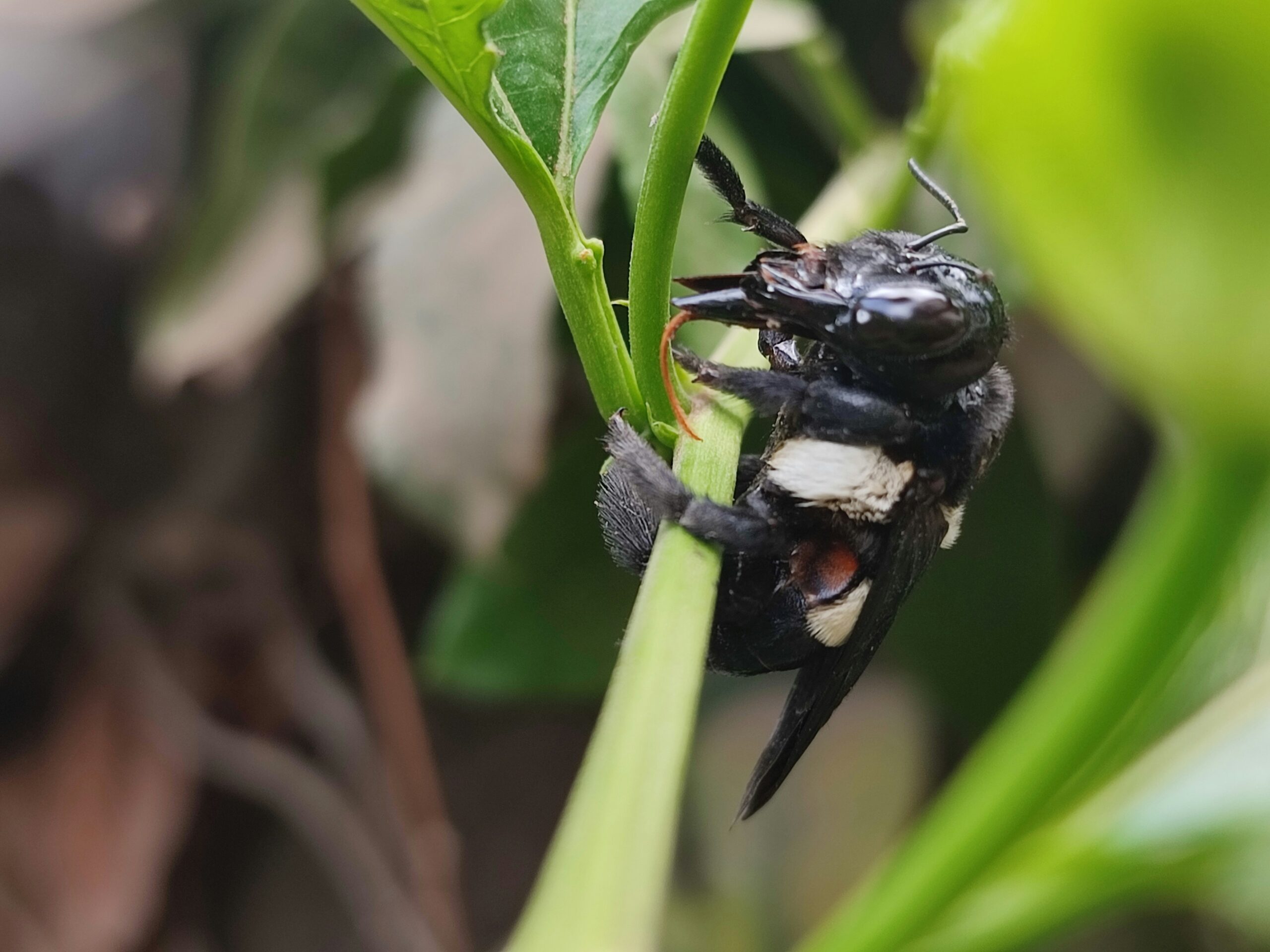CARPENTER BEES
Your Carpenter Bees Problem, Gone For Good, Guaranteed.
Talk to an Expert
We’ll be in touch to personalize your pest protection plan:

DESCRIPTION:
___
They are large (1/2 x 1 inch long), robust insects that look like bumble bees. They differ by having a bare, shiny black abdomen compared to bumble bees which have a hairy abdomen with some yellow markings.
BIOLOGY:
___
Adults overwinter in galleries, emerging in the spring to mate. The female prepares a nest by excavating a new site or more frequently by cleaning out and expanding an existing tunnel. After the nest is ready, she places a mass of pollen mixed with nectar in the blind end of the tunnel, lays an egg on it, and builds a partition of chewed wood pulp to form a brood cell. Six to eight brood cells are constructed in each cell. The bee larvae develop on the pollen and emerge as adults 30 to 40 days later, usually in late summer. There is one generation per year.

Habits:
___
Carpenter bees are not social insects, i.e., they do not live in nests or colonies like yellow jackets and honey bees. Carpenter bees bore holes into wood to create a tunnel in which to raise their young. They attack decks, siding, landscape timbers, and even lawn furniture. They seem to prefer unpainted wood, but they will also attack painted or stained wood. The initial opening is straight into the wood and is cut in an almost perfect circle. When the hole is about an inch deep, she turns and begins to burrow along the grain. A new gallery may be 6″ long. Older galleries that have been re-used may extend several feet. It takes a female several days to make a 6″ gallery. Entry holes are usually located in well-lit and sheltered areas, such as headers, roof eaves, porch ceilings, fascia boards, decks, doors, and window sills. Soft wood, such as California redwood, cedar, white pine, and poplar is preferred for nest building.
Male carpenter bees are very aggressive, but they have no stinger. Females have a potent stinger, but seldom sting.
